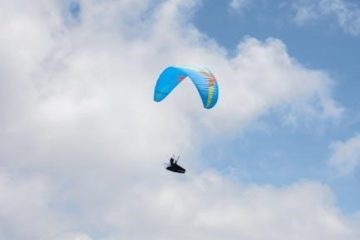Knots are fundamental tools with diverse applications across various fields. From securing ropes to joining materials, understanding basic knot tying is essential for activities like sailing, climbing, and even first aid, ensuring safety and efficiency.
Definition of Knots, Hitches, and Bends
Within the realm of ropework, it’s crucial to differentiate between knots, hitches, and bends. A knot generally refers to an interlacement of rope used to secure or fasten. Hitches, conversely, are used to attach a rope to another object, like a post or ring, relying on friction for security. Bends, such as the sheet bend or carrick bend, serve specifically to join two ropes together, often of differing thicknesses.
Understanding these distinctions is paramount for selecting the appropriate technique for a given task. Each category serves a distinct purpose, impacting the overall effectiveness and safety of the application. Choosing the right knot, hitch, or bend ensures a secure and reliable connection, whether for rescue operations, securing loads, or creating loops.

Basic Knot Types and Their Uses
Mastering fundamental knots unlocks a world of practical applications. From the simple overhand knot to the versatile bowline, each serves a purpose, whether stopping rope ends or forming secure loops for various tasks.
Overhand Knot and its Applications
The overhand knot, a deceptively simple binding, serves as a foundational element in knot tying. Primarily, it functions as a stopper knot, preventing rope ends from unraveling or slipping through holes. Its simplicity makes it easy to tie and remember, rendering it useful in various situations where a quick and basic knot is needed;
Beyond its primary use, the overhand knot finds applications in creating more complex knots; It is often incorporated as a component in other knots. For example, it can be used as a part of a blood knot on a cat-o-nine-tails, or the snapper of an ox whip. While not the most secure knot on its own, its role as a building block enhances its overall utility. Remember, practice makes perfect, even with simple knots like the overhand.
Square Knot (Reef Knot) for Bandages and Light Loads
The square knot, also known as the reef knot, is a binding primarily used for securing bandages in first aid situations and for fastening light loads. Its symmetrical structure makes it relatively easy to tie and recognize, a crucial advantage when time is of the essence. The square knot serves well for joining two ropes, cords, or lines of similar thickness.
However, it’s crucial to understand the square knot’s limitations. It is unreliable and should never be used to join two ropes that will be under load, as it can slip or come undone. Despite its usefulness in specific situations, its instability under heavy tension makes it unsuitable for critical applications like climbing or towing. Always check the knot for security after tying.
Bowline for Forming a Secure Loop
The bowline is a versatile knot renowned for its ability to create a secure and dependable loop at the end of a rope. This loop will not jam under strain and is known for being easy to untie, even after bearing a significant load, making it a valuable knot in various scenarios, including rescue situations. Its reliability stems from its stable structure, which resists slipping when properly tied.
The bowline forms a fixed loop, large or small, at the end of a line. The applications are broad, ranging from boating and sailing to climbing and securing loads. While generally reliable, it’s essential to use a stopper knot, such as an overhand knot, at the end of the bowline when used to carry an injured person, ensuring added safety and preventing potential slippage.

Knots for Joining Ropes
Joining ropes securely is crucial in many situations. Several knots are specifically designed for this purpose, each with unique strengths. The choice depends on factors like rope thickness and load requirements.
Sheet Bend for Joining Ropes of Different Thicknesses
The sheet bend is a vital knot specifically designed for securely connecting two ropes of unequal diameters. Unlike some joining knots, the sheet bend’s structure ensures a reliable hold even when the ropes vary significantly in thickness. This makes it incredibly useful in diverse scenarios where uniform ropes aren’t available.
The knot’s effectiveness stems from its ability to distribute the load evenly across both ropes, minimizing the risk of slippage or failure. It is important to ensure the thinner rope is used to form the loop for maximum security.
Sailors and outdoor enthusiasts often use the sheet bend, because of its versatility and ease of tying, even under adverse conditions. Its dependable nature makes it a go-to knot for temporarily securing tarps, sails, or other equipment using ropes of varying sizes.
Carrick Bend for Heavy Loads
The Carrick bend is a robust and symmetrical knot renowned for its exceptional strength and reliability when joining two ropes, particularly under heavy loads. Its interwoven structure provides a secure connection that resists slippage and deformation, making it a preferred choice for demanding applications like towing, mooring, and lifting.
The knot’s bulkiness can be a disadvantage in some situations; however, its strength far outweighs this consideration when dealing with substantial weight. The Carrick bend’s symmetrical design ensures that the load is distributed evenly across both ropes, reducing the risk of failure under stress.
While more complex to tie than some other joining knots, the Carrick bend’s superior strength and stability make it an invaluable skill for anyone working with heavy loads or in situations where a secure connection is paramount. Mariners, construction workers, and rescue personnel often rely on the Carrick bend for its dependable performance.

Hitches for Securing Ropes to Objects
Hitches are vital for temporarily fastening a rope to an object, like a tree or post. They offer versatility in securing lines for various tasks, demanding the right choice for safety.
Clove Hitch for Temporary Fastening
The clove hitch is renowned for its ease of tying and its effectiveness as a temporary fastening solution. This hitch is particularly useful when needing to quickly secure a rope to a pole, ring, or another rope. It’s commonly employed in situations where adjustments may be necessary, making it a practical choice for tasks requiring adaptability.
However, it’s crucial to recognize that the clove hitch is not designed for applications involving heavy loads or situations where the rope is subject to constant tension. Under such conditions, the hitch may slip or come undone, compromising safety. Therefore, it serves best as a temporary securing method.
The speed and convenience of the clove hitch make it a valuable skill for anyone working with ropes. Mastering this hitch allows for swift adjustments and secure temporary bindings in various scenarios, enhancing efficiency and safety.
Round Turn and Two Half Hitches for Secure Attachment
The round turn and two half hitches is a reliable knot known for creating a secure and steadfast attachment. This knot is particularly effective for securing a rope to a fixed object, such as a ring, post, or rail, making it a preferred choice in various applications where a strong and dependable connection is essential.
The initial round turn provides increased friction, reducing the strain on the subsequent half hitches. This configuration distributes the load evenly, enhancing the overall stability of the knot. As a result, the round turn and two half hitches offers superior holding power compared to simpler hitches, making it suitable for more demanding tasks.
Due to its robust nature, this knot is commonly used in boating, camping, and other outdoor activities. It stands as a practical and trustworthy solution for creating secure attachments in diverse situations, ensuring safety and reliability.

Knots for Specific Purposes
Certain knots excel in particular applications, designed to solve unique challenges. These specialized knots, from stopper knots to fixed loops, demonstrate the versatility of knot tying in addressing specific needs effectively.
Figure-Eight Knot as a Stopper Knot
The Figure-Eight knot is highly regarded as a reliable stopper knot, preventing ropes from slipping through holes or devices. Its superior size and structure compared to the Overhand knot make it easier to untie, even after bearing a significant load. This characteristic is particularly valuable in climbing, sailing, and rescue operations where ropes are subjected to considerable tension.
The Figure-Eight’s robust nature ensures it won’t easily loosen or jam, providing added safety and security. Its formation involves creating a figure-eight shape with the rope before passing the end through the loop. Its applications range from preventing ropes from unraveling to serving as a crucial safety measure in various high-stress activities. Its ease of tying and untying further solidifies its place as a preferred choice.
Butterfly Knot for Creating a Fixed Loop in the Middle of a Rope
The Butterfly knot excels at forming a secure, fixed loop in the middle of a rope, offering unique versatility. Unlike end-of-rope loops, the Butterfly allows for attachment points along a rope’s length without compromising its integrity. This makes it valuable in situations such as creating intermediate anchor points in climbing or rigging systems.
The knot’s symmetrical design ensures balanced loading, reducing the risk of failure under tension. Its structure distributes force evenly, enhancing safety and reliability. Tying the Butterfly involves a series of wraps and tucks, resulting in a stable loop that resists slipping. Whether for creating a temporary lifeline or attaching gear mid-rope, the Butterfly knot proves indispensable. Its ability to maintain strength and stability makes it a go-to choice in demanding applications.



0 Comments